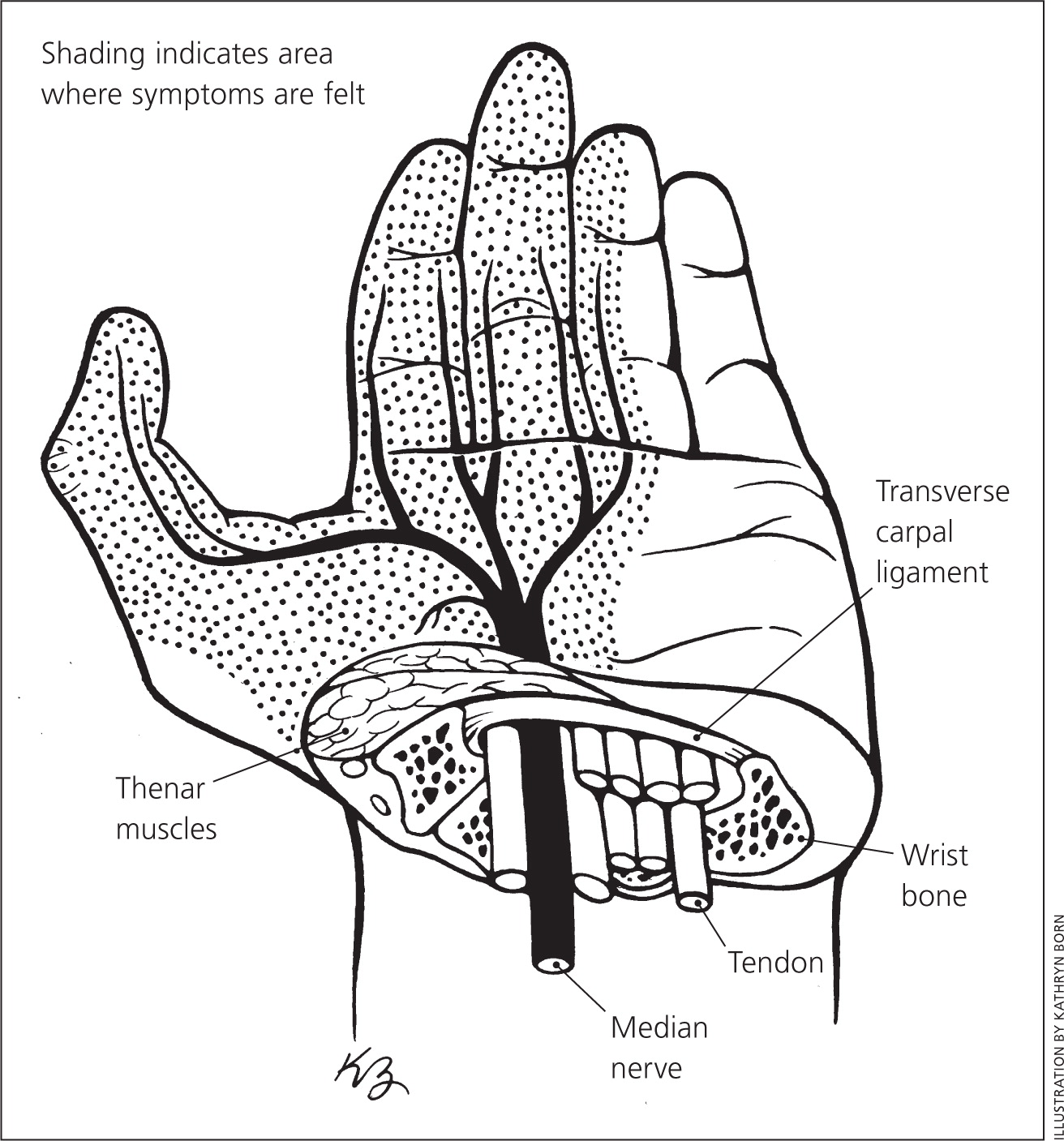
Am Fam Physician. 2016;94(12):1a-2
See related article on carpal tunnel sydrome
What is carpal tunnel syndrome?
Carpal tunnel syndrome (KAR-puhl TUN-el SIN-drome) is a common, painful disorder of the wrist and hand. It happens when the median nerve, which runs through the wrist, gets squeezed under a band of tissue called a ligament. This causes pain and other symptoms along the nerve (see drawing).

What causes it?
Anything that increases pressure on the median nerve can cause carpal tunnel syndrome. Sometimes pregnancy and health conditions, like arthritis and diabetes, can increase the pressure. Over time, repeated forceful hand movements can increase your risk of carpal tunnel syndrome, such as in people who work in food processing and packaging or assembly.
What are the symptoms?
Carpal tunnel syndrome may cause pain, numbness, or tingling in your wrist and hand, mostly in the middle finger, index finger, and thumb. The symptoms are usually worse at night and when you use your wrists and hands a lot. You may notice that over time your grip gets weaker and you tend to drop heavy objects.
How is it diagnosed?
Talk to your doctor if you have these symptoms. He or she will ask you about the ways you use your hands and about specific symptoms in each part of your hand and wrist. Your doctor may also test how your nerves and muscles react to electrical stimulation.
How is it treated?
If you have a disease or condition that is causing carpal tunnel syndrome, treatment may improve your symptoms. Not repeating the same hand activities, doing hand and wrist exercises, and wearing a wrist splint may also help. Your doctor may prescribe medicine to reduce wrist swelling or recommend a shot into your wrist. If these treatments don't help, surgery may be an option. Surgery for carpal tunnel syndrome is a quick procedure and usually cures the condition. Most people can return to normal activities in two weeks.
Where can I get more information?
Your doctor
AAFP's Patient Information Resource
American College of Rheumatology
National Institutes of Health
